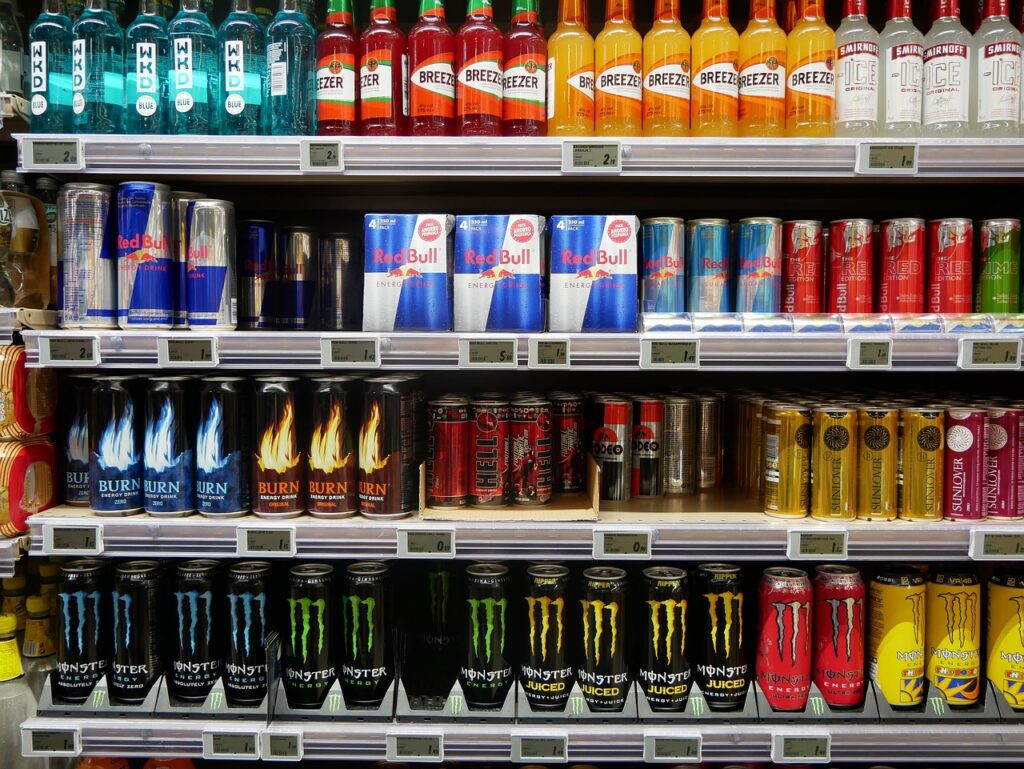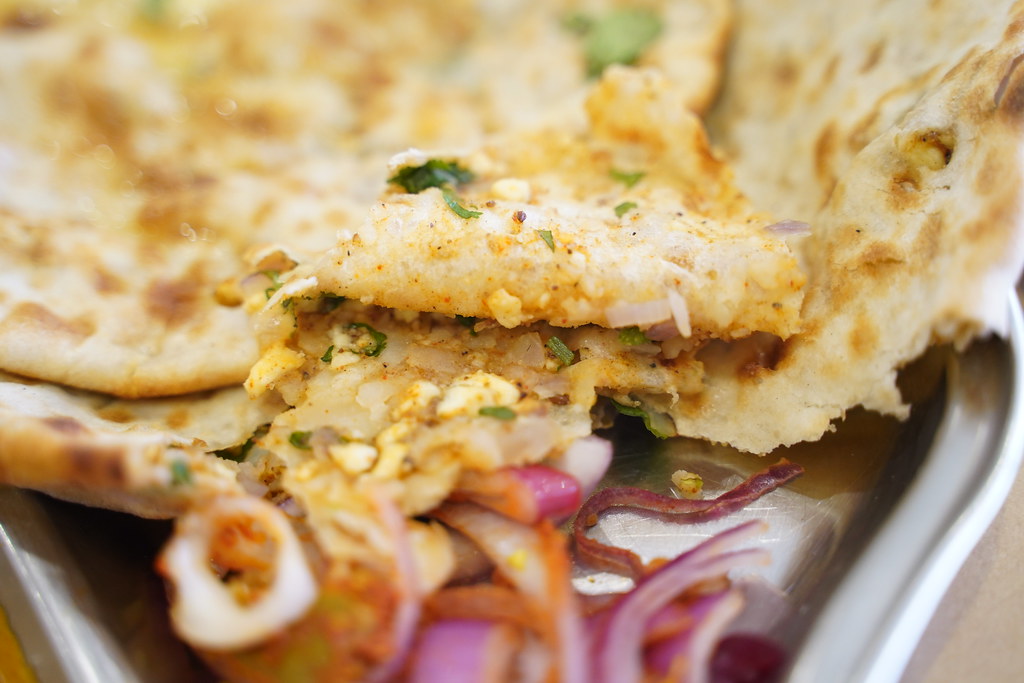Have you ever noticed the peculiar phenomenon where the most energetic people you know don’t touch energy drinks, and those guzzling them down seem to be the least energetic? This curious observation leads us into a fizzy discussion about the world of energy drinks, their promises, and the somewhat ironic outcomes they often deliver. Let’s pop the tab and dive into the effervescent truth behind these popular potions.
The Lure of Instant Energy
Energy drinks, those vibrant vials of vigor, promise to zap us into a state of high alertness and productivity. With their flashy cans and punchy slogans, they beckon from the shelves like neon sirens, luring us with the promise of instant energy. But what’s really in these cans of can-do attitude? The primary ingredient, caffeine, is the heart of the energy drink’s power. A single 8-ounce energy drink can pack around 80 milligrams of caffeine, which is no small jolt considering the U.S. Food and Drug Administration’s daily caffeine cap of 400 milligrams.
Caffeine, that beloved brain booster, works its magic by blocking adenosine, a sleepy little brain chemical that’s all about relaxation and downtime. When caffeine swoops in, it’s like a loud party crashing the calm, causing neurons to fire up and dance to the beat of increased brain activity. This is why, after a sip or two, we feel like we’ve been struck by a bolt of lightning, ready to conquer our to-do list with the ferocity of a caffeinated cheetah.
The Crash After the Lightning
Here’s the rub: that electrifying energy boost is often followed by a crash, leaving us more exhausted than if we’d just taken a nap. Kimberly Gomer, MS, RD/LDN, a nutrition expert, explains that as the caffeine’s effects wear off, we’re left feeling like a deflated balloon after a party. The dreaded caffeine crash can sneak up on us with symptoms like tiredness, irritability, and the ever-dreaded headache, striking within one to five hours after consumption.
Sugar: The Short-Lived Sprint
Let’s stir in the sugar – the other main ingredient in this concoction. Energy drinks are often brimming with sugar, with some brands packing between 21 and 34 grams of the sweet stuff per ounce. That’s a lot of sugar, especially when you consider that the FDA suggests capping our daily added sugar intake at 50 grams. The sugar in energy drinks comes from sources like sucrose, glucose, or the much-maligned high fructose corn syrup. While it may give us a fleeting rush of energy, akin to a sprinter dashing out of the blocks, this sugar high is short-lived, lasting about as long as a sitcom sans commercials.
The irony doesn’t escape us: energy drinks, designed to make us feel like superheroes, can actually leave us feeling more like sidekicks after a long day of crime-fighting. The sugar and caffeine tandem can cause our blood sugar to spike and then plummet, leaving us feeling sluggish and spent. It’s like being on a rollercoaster ride without the fun of the amusement park.
The Popularity Despite the Pitfalls
Despite these pitfalls, energy drinks have soared in popularity, with global sales reaching a staggering $57 billion in 2020. They’ve become the go-to pick-me-up for many, especially U.S. teens and young adults, who rank them just behind multivitamins in dietary supplement popularity. Most energy drinks contain a caffeine content that ranges from 100 to 300 milligrams per serving, which is within the safe zone for most adults. However, for pregnant or breastfeeding individuals, the safe limit drops to 200 milligrams, and for children and adolescents, the American Academy of Pediatrics advises against caffeine and stimulants altogether.
Caffeine and Health: The Delicate Balance
Caffeine’s effects on our health are a mixed bag. On one hand, it can sharpen our vigilance, reaction time, and concentration, and even help us fight off the drowsiness that comes from too little sleep. It’s even been linked to a lower risk of some serious conditions like Parkinson’s and Alzheimer’s diseases. On the flip side, too much caffeine can turn us into jittery, irritable insomniacs, and in extreme cases, it can cause palpitations and gastrointestinal upset. It’s a delicate balance, like walking a tightrope while juggling hot coffee.

Let’s not forget the sugar. While a little sweetness in life is delightful, too much added sugar can lead to a host of health issues. The Dietary Guidelines for Americans recommend keeping our added sugar intake to less than 10% of our total daily calories. To put that into perspective, a single 16-ounce can of Monster Energy Juice Pacific Punch delivers an entire day’s worth of added sugar, with 47 grams packed into its punchy contents.
Energy drinks may also include a cocktail of vitamins, minerals, amino acids, and herbal supplements like ginseng and guarana. While these ingredients might sound like a recipe for health, caution is advised. The safety and effectiveness of these supplements can be as murky as a mojito without the mint, and interactions with prescription medications can add an unwanted twist.
The Takeaway: True Energy from a Balanced Lifestyle
What’s the takeaway from this fizzy fable? It seems that while energy drinks can offer a temporary boost, they come with a side of potential pitfalls that might leave us feeling less than supercharged. As we navigate the colorful aisles of quick fixes, it’s important to read labels, understand what we’re consuming, and perhaps consider healthier alternatives to keep our energy levels up without the crash. After all, true energy comes not from a can, but from a well-balanced lifestyle that includes proper nutrition, exercise, and rest.
Let’s explore the sugar rush and caffeine crashes in more detail and discuss the irony of energy drinks in our quest for vitality.
Sugar Rush and Caffeine Crashes: The Irony of Energy Drinks
Let’s talk about the sweet irony of energy drinks. They’re like that friend who promises to help you move and then bails last minute, leaving you with a couch stuck in the stairwell. Energy drinks pledge to elevate us to the pinnacle of alertness, yet often, they drop us off at the gates of Slumpsville. It’s a rollercoaster of sugar highs and caffeine crashes, and we’re strapped in, holding on to our cans for dear life.
Energy drinks are often loaded with sugar, and I mean loaded. Imagine a donut, then imagine 20 of them. That’s the level of sugar we’re talking about in some of these cans. With up to 34 grams of sugar per ounce, it’s like hosting a party in your mouth where every guest is a sugar cube. And the FDA? They’re the party poopers, recommending no more than 50 grams of added sugar per day. But who’s counting when you’re chasing that sweet, sweet rush of energy, right?
Here’s the kicker: that rush is more of a short sprint than a marathon. It lasts about as long as a cat’s attention span—roughly 30 minutes. Then, the crash comes knocking. It’s like the sugar cubes had a wild party, trashed the place, and left you to clean up the mess. You’re left feeling more sluggish than a sloth on a lazy Sunday, and that’s saying something.
It’s the life of the party in the energy drink shindig. It swoops in, blocks adenosine like a bouncer at the club, and gets the neurons firing like it’s New Year’s Eve. But what goes up must come down, and caffeine is no exception. Once it wears off, you’re not just coming down; you’re free-falling into a pit of tiredness, irritability, and headaches. It’s like the bouncer decided to throw you out of the club, and you land face-first on the sidewalk.
The popularity of these drinks is no joke, though. With sales hitting $57 billion, it’s clear we’re hooked on the hype. They’re the go-to for a quick pick-me-up, especially among U.S. teens and young adults. But with great power comes great responsibility, and with great caffeine comes the need for caution. For the pregnant, the breastfeeding, and the young, the safe limit drops like a bad habit. And for the rest of us, too much caffeine can turn us into jittery, irritable, sleepless zombies.
There’s more! Energy drinks often come with a side of vitamins, minerals, amino acids, and herbal supplements. It sounds like a health nut’s dream, but it’s more of a murky mystery. The safety and effectiveness of these ingredients are as clear as mud, and they can throw a wrench in the works if you’re on prescription meds.
Cheers to Smarter Choices
What’s the moral of this fizzy story? Energy drinks can give us a temporary lift, but they’re not the superheroes they’re dressed up to be. They can leave us feeling drained, and let’s face it, nobody wants to feel like a battery at 1%. As we navigate the neon jungle of energy drinks, it’s crucial to read the labels, know what we’re guzzling, and maybe, just maybe, consider healthier alternatives to keep our energy levels soaring.
It’s about finding balance. It’s about choosing the right fuel for our bodies, not just the one with the flashiest can. It’s about understanding that true vitality doesn’t come from a liquid lightning bolt, but from a well-rounded lifestyle. So next time you reach for that can of energy, ask yourself: is this going to lift me up or let me down? Remember, the best energy boost is the one that lasts, not the one that crashes harder than a wave on the shore.
Related posts:
Energy Drinks Make You Tired? You’re Not Alone
The buzz on energy drinks
Can Energy Drinks Ever Be Healthy? Here’s What to Know, According to Experts




